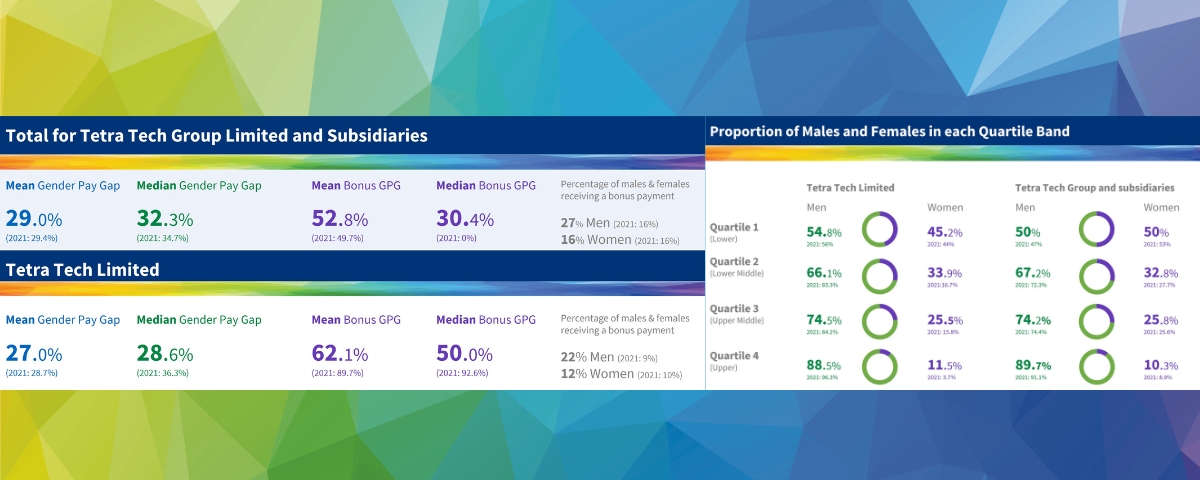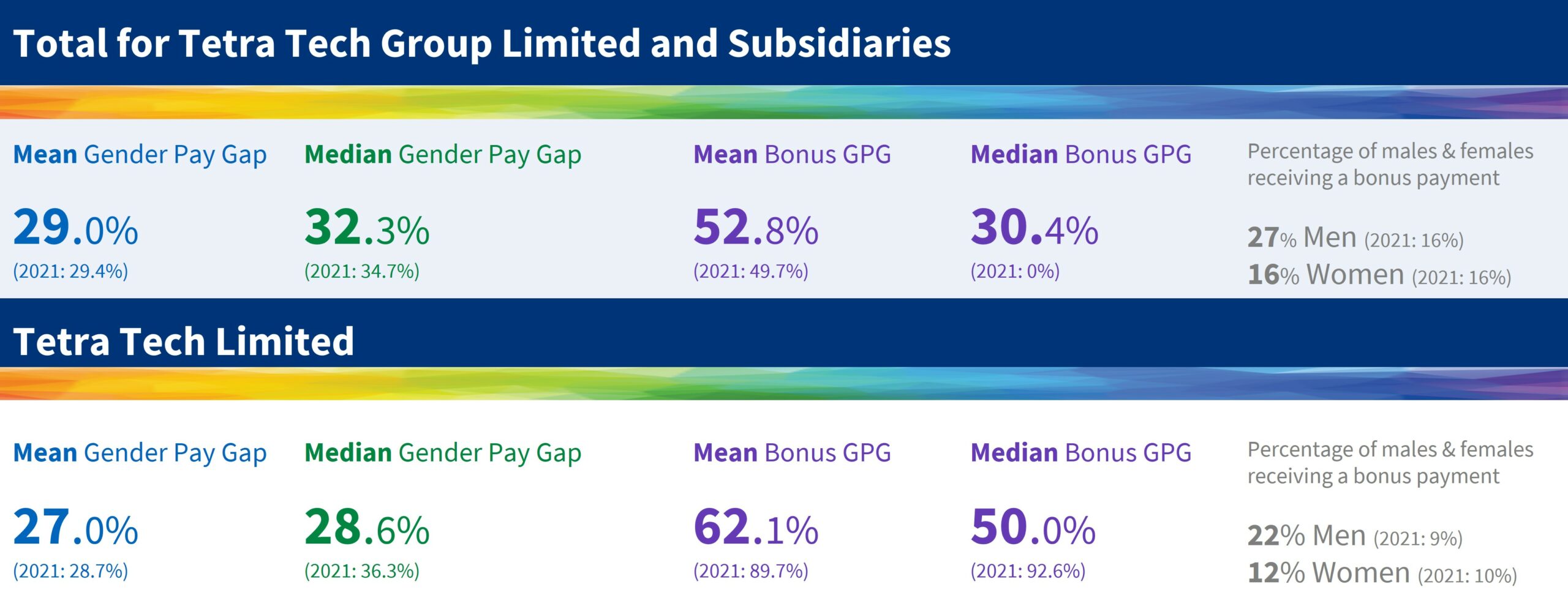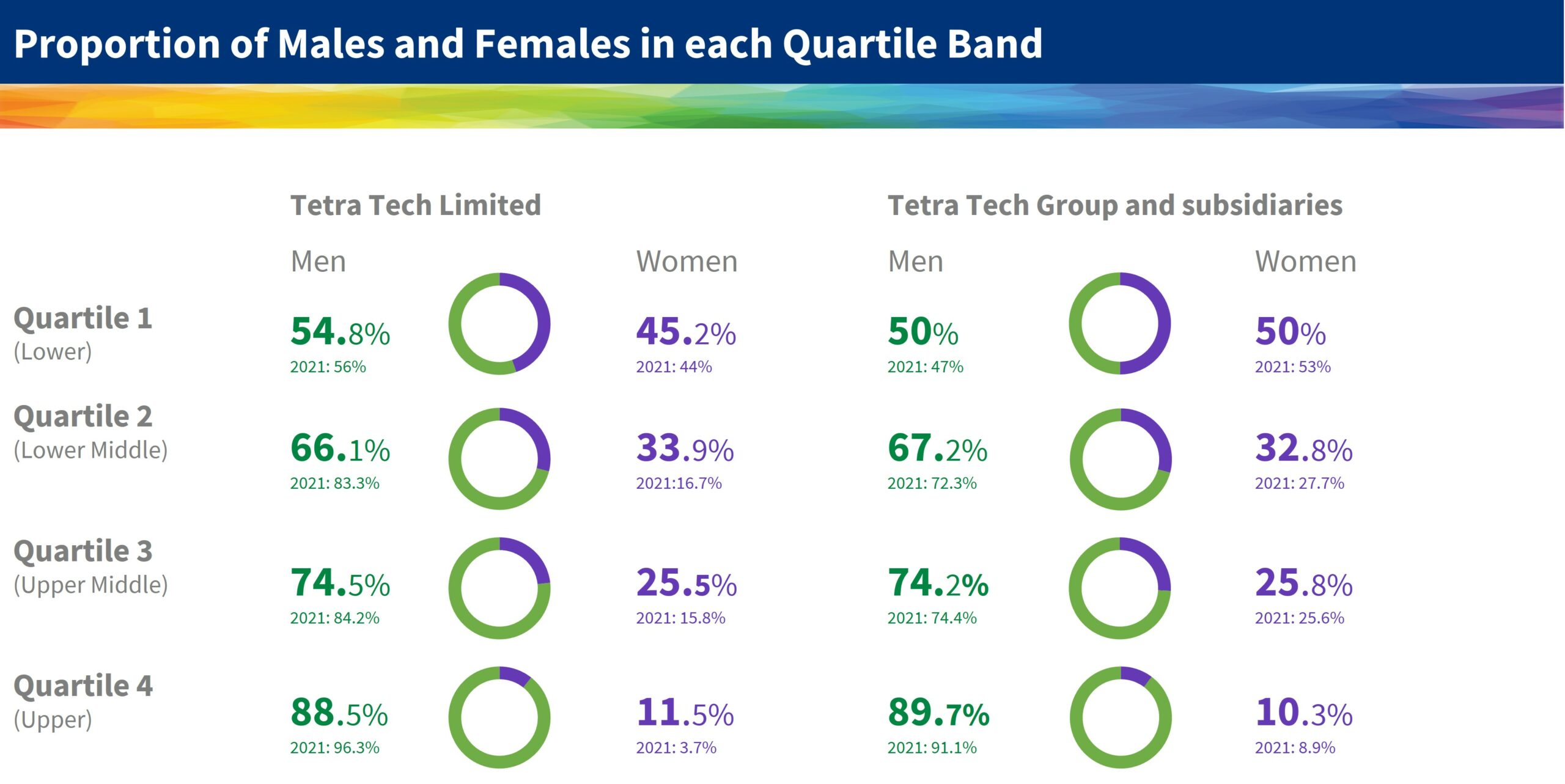
Reporting our Gender Pay Gap
Our annual Gender Pay Gap (GPG) report has been released today (3 April 2023). Our results are based on the snapshot date of 5 April 2022
We are required to publish data for any legal entity where we have more than 250 employees. Currently this only includes Tetra Tech Limited however for full visibility we have also shared combined figures for all legal entities that sit under Tetra Tech Group Limited in the UK.
What do 2022’s figures show?
It is fair and accurate to say that whilst our mean and median GPG figures are improving year on year we are disappointed that the difference between 2021 and 2022 is only marginal. Having implemented a number of actions in the last 12 months we are aiming to see a more significant improvement when reporting next years’ figures but we will also approach the next 12 months with a renewed focus on what more we can and need to do as a business to reduce our gender pay gap.
One of the encouraging signs from these figures is that when looking at our group of companies, with the exception of Quartile 1 (which is now and equal 50/50 split of male and female) we have seen an increase in the percentage of females at every level of our business. However, Quartile 4, where our most senior level positions reside is still only 10.3% female and so this is an area where we will look to target particular improvement.
What are we doing to change our Gender Pay Gap?
Our Way of Working continues to support colleagues of all genders offering a truly agile and flexible working model to assist them in finding the optimum work/life balance. Further to this one of our next steps will be to look at increasing the number of our advertised roles which could be offered as part-time, job shares or term time only, extending the pool of talent that can access our job opportunities.
Our mentoring programme also continues, including a specific focus on underrepresented groups (including females) to help to unlock any challenges to progressing in their chosen careers.
Over the past year we have also been supporting a number of colleagues on their route to Fellowship and Chartership using our career development frameworks and technical development maps. This has included a number of females colleagues becoming Chartered Project Managers as well as an individual becoming a Fellow of the ICE, one of only a handful of women to hold that title in the UK. As leaders these women continue their professional development within our business and our hope is that they will inspire future generations of females to seek out a career at Tetra Tech.
More recently we held a conference for around 180 leaders within our business. During this event we welcomed Global Diversity Practice founder and CEO Farrah Qureshi to talk to our business about the benefits of creating an inclusive and diverse workplace. This has sparked some excellent conversation about what more we can do and we will now be looking at what further education, training and resources we can put in place for all our colleagues.
Craig Hatch, President, Tetra Tech UK, commented:
“Our business needs to be representative of the communities our work serves to ensure we have diversity of thought in our project teams and deliver the best possible solutions for our clients. That is why it is so important that our focus stays firmly on making changes that will improve our gender pay gap and the wider diversity of our business as a whole. This is something I am passionate about and remain committed to improving throughout our business”
Our reported data can also be found on the UK Government’s website: GOV.UK / Tetra Tech Ltd.
Rich Roberts, Group HR Director
Notes on what is being reported and how is it calculated?
Gender Pay is not the same as Equal Pay. Equal pay is legally required and makes sure that both genders receive the same pay for doing the same (or equivalent) job.
Gender Pay is the comparison of the average hourly pay of men and the average hourly pay of women irrespective of the job they do, expressed as a percentage. We are required to share both a Median and Mean calculation.
MEDIAN: This is calculated by lining up the remuneration of male and female employees from highest to lowest. The median compares the female and the male in the middle of their lines.
MEAN: This is the average of the whole sample for both men and women and therefore can be affected by extreme values at either end of the pay distribution.

